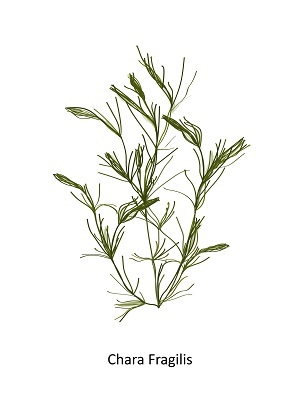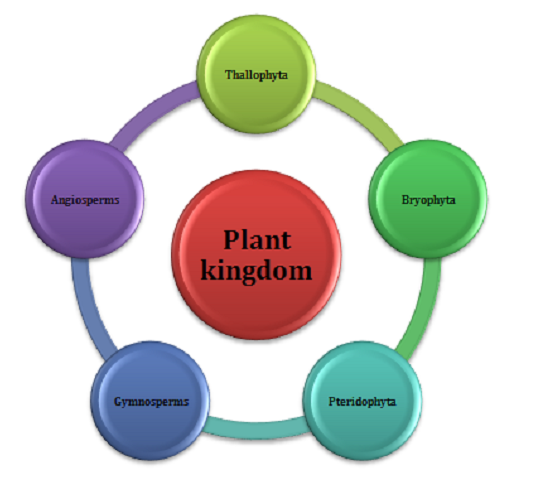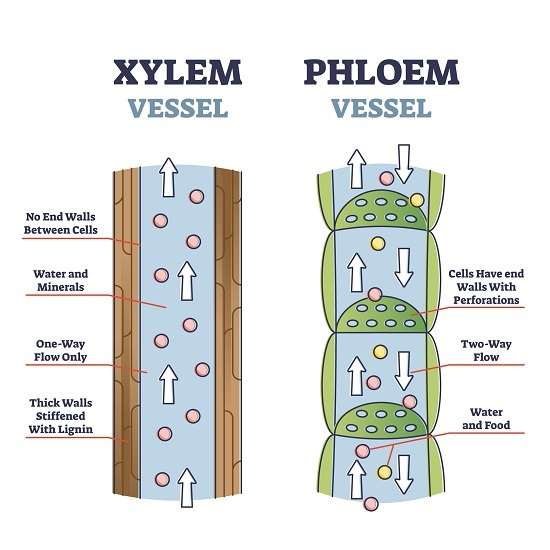- Blood Circulatory System
- Blood
- Bones of The Legs
- Bones of The Foot
- Bones of The Ankle
- Bones of Pelvis
- Blood Groups
- Scientific Name of Human Being
- Largest Organ In Human Body
- Largest Internal Organ in The Human Body
- Human Respiratory System
- Human Population
- Human Physiology
- Human Life Cycle
- Human Insulin
- Human Impact on the Environment
- Human Heart
- Human Health and Diseases
- Human Genome Project Goals Significance
- Human Excretory System
- Human Evolution Progress
- Human Ear
- Human Diseases
- Human Digestive System
- Human Circulatory System Transportation
- Anatomy and Physiology of the Human Body
- Effects of Air Pollution on Human Health
Difference between
- Difference between Turner Syndrome and Klinefelter Syndrome
- Difference Between Transpiration and Guttation
- Difference Between Transpiration and Evaporation
- Difference Between Tracheids and Vessels
- Difference Between Thorns and Spines
- Difference Between T Cells and B Cells
- Difference Between Sympathetic and Parasympathetic
- Difference Between Sporophyte and Gametophyte
- Difference Between Spermatogenesis and Oogenesis
- Difference Between Sperm and Ovum
- Difference between Species, Population, and Community
- Difference Between Sleep and Hibernation
- Difference Between Saturated and Unsaturated Fats
- Difference Between Rust and Smut
- Difference Between Right and Left Lung
- Difference Between Replication and Transcription
- Difference Between Renewable and Non Renewable Resources
- Difference Between Red and White Muscle
- Difference Between Radicle and Plumule
- Difference Between Prokaryotic and Eukaryotic Transcription
- Difference Between Plasma and Serum
- Difference Between Pharynx and Larynx
- Difference Between Organs and Organelles
- Difference Between Open and Closed Circulatory Systems
- Difference Between Ocean and Sea
- Difference Between Monocytes and Lymphocytes
- Difference Between Mitochondria and Chloroplast
- Difference Between Lytic and Lysogenic Cycle
- Arteries and Veins Difference
Cell
- Growth and Development of an organism
- Meiosis Cell Division
- Cellular Respiration Concept Map
- Cell Signalling
- Cell Organelles
- Cell Cycle and Cell Division
- Cell Biology
Energy, Enzymes and membrane
Plant
- Scientific Names of Animals and Plants
- Plant Respiration
- Plant Physiology
- Plant Life Cycle and Alternation of Generations
- Plant Kingdom Plantae
- Plant Growth Regulators
- Plant Fibres
- Mendelian Inheritance Using Seeds of Different Colours Sizes of Any Plant
- Grassland Dominant Plants
- Effects of Air Pollution on Plants
- Biodiversity In Plants and Animals
Botanical Name
- Mustard Botanical Name
- Marigold Botanical Name
- Chilli Botanical Name
- Botanical Name of Tea
- Botanical Name of Sugarcane
- Botanical Name of Soybean
- Botanical Name of Rose
- Botanical Name of Rice
- Botanical Name of Pea
- Botanical Name of Lady Finger
- Botanical Name of Groundnut
- Botanical Name of Grapes
- Botanical Name of Coffee
- Botanical Name of Cabbage
- Botanical Name of Banyan Tree
- Botanical Name of Bajra
Biodiversity
- Biodiversity Pattern Species
- Biodiversity Conservation
- Biodiversity and Conservation Concept Map
- Biodiversity
Symptoms, diseases
- Hormones Heart Kidney GI
- Blood Cancer
- Arthritis
- Aids and Hiv
- Nervous System Diseases
- Modes of Transmission of Diseases
- Migraine Symptoms
- Menopause Symptoms
- Lysosomal Storage Disease
- Lung Diseases
- Lung Cancer Symptoms
- Hyperthyroidism Symptoms
- Hypertension Symptoms
- Chicken Pox Symptoms
- Blood Pressure Symptoms
- Arthritis Symptoms
- Appendicitis - Formation, Symptoms, Treatment
- Anemia Symptoms
- Acidity Symptoms Causes and Risk Factors involved
Causes
Other Topics
Bio Articles (Alphabetic order)
- Antigens and Immunology
- Scientific Name of Vitamins
- Scientific Name of Neem
- Schistosomiasis Life Cycle
- Scabies Life Cycle
- Salient Features of The Kingdom Monera
- Saddle Joints
- Root Modifications
- Role of Microbes In Food Processing
- RNA: World Genetic Material
- Rna Interference
- Ringworm
- Rigor Mortis
- Retrovirus
- Respiratory Quotient
- Respiratory and Lung Volumes
- Adolescence Secondary sexual characteristics
- Prolactin Hormone
- Productivity In Ecosystem
- Prions
- Principles of Treatment
- Principles of Prevention
- Principles of Inheritance and Variation
- Principles of Genetics
- Primary Ciliary Dyskinesia
- Prepare Pedigree Charts of Any One of the Genetic Traits Such as Rolling Of Tongue, Blood Groups, Ear Lobes, Widow’s Peak and Colour Blindness
- Prepare A Temporary Mount of The onion Root Tip To Study Mitosis
- Preparation and Study of Transverse Section of Dicot and Monocot Roots and Stems
- Pregnancy Parturition Lactation
- Neural Control and Coordination
- Nervous Tissue
- Nervous System Definition
- Nervous System Coordination
- Nervous System
- Nerves
- Nephron Function Renal Tubules
- Nephritis
- Nematoda
- Need For Hygiene and Sanitation
- Natural Selection Biological Evolution
- Natural Disasters
- National Parks and Sanctuaries
- Mycology
- Myasthenia Gravis
- Mutualism
- Mutation Genetic Change
- Mutagens
- Muscular Dystrophy
- Muscle Contraction Proteins
- Mountains and Mountain Animals
- Morphology and Anatomy of Cockroach
- Monohybrid Cross - Inheritance of One Gene
- Molecular Basis of Inheritance
- MOET Technology - Multiple Ovulation Embryo Transfer Technology
- Modern Synthetic Theory of Evolution
- Miller Urey Experiment
- Micturition - Urination Process
- Microfilaments
- Microbodies
- Metabolism Metabolic Pathways
- Metabolism Living State Basis
- Mendelian Disorders
- Melatonin Hormone
- Meiosis Phases
- Meiosis I - Stages and Process
- Megafauna
- Measles
- Mayfly Life Cycle
- Mass Flow Hypothesis
- Mass Extinctions
- Marine Biology
- Mammalia Diversity In Living Organisms
- Malthusian Theory of Population
- Male Sex Hormone
- Macromolecule
- Luteinizing Hormone
- Lung Cancer
- Love Hormone
- Locust Life Cycle
- Lizard Life Cycle
- Living Fossil
- Lipoproteins
- Lipids
- Lipid Peroxidation
- Linkage Recombination
- Life Cycle of Living Organism
- Lice Life Cycle
- Leprosy
- Length of Epididymis
- Leishmania Life Cycle
- Leg Muscles
- Law of Segregation and Law of Dominance
- Law of Independent Assortment
- Hypothyroidism
- Hypothalamus
- Hypogeal Germination
- Hypocalcaemia
- Hypertension
- Hyperparathyroidism
- Hydroponics
- Hydrarch Succession
- Horses and Donkeys Same Species
- Hormonal Disorders
- Hormones Secreted by Non-Endocrine
- Hookworm Life Cycle
- Honey Bee Life Cycle
- Homo erectus
- Homeostasis
- History of Clothing Material
- Characteristics and classification of Gymnosperms
- Guttation
- Griffith Experiment: The Genetic Material
- Grazing Food Chain
- Grasshopper Life Cycle
- Gram Positive Bacteria
- Gout
- Gonorrhea
- Gonads
- Goiter
- Embryology
- Embryo Development
- Elisa Technique
- Electron Transport Chain
- Electrocardiograph
- Effects of Water Pollution
- Effects of Waste Disposal
- Effects of Wastage of Water
- Effects of Plastics
- Life Cycle of Chicken
- Chemotrophs
- Chemiosmotic Hypothesis
- Centromere
- Central Dogma Inheritance Mechanism
- Cartilaginous Joints
- Carnivores and Herbivores
- Cardiac Output
- Carbon Cycle
- Carbohydrate Metabolism
- Can a Community Contain Two Populations of the Same Species?
- Bt Crops
- Bryophyta
- Blastocyst
- Bird Life Cycle
- Biotechnology Jobs
- Biotechnology Agriculture
- Biosafety Issues
- Bioreactor Obtaining Foreign Gene
- Biopiracy
- Biomolecules In Living Organisms
- Biomes of The World
- Biomass Definition Ecology
- Biofortification
- Asteraceae Brassicaceae Poaceae
- Ascaris Life Cycle
- Artificial Pollination
- Archaebacteria
- Apoptosis Definition, Pathway, Significance, and Role
- Apoplast and symplast pathway
- AntiMullerian Hormone (AMH)
- Antimicrobial Resistance
- Antibiotics
- Ant Life Cycle
- Annelida Meaning, Classification, Types, and FAQs
- Animal Nervous System
- Animal Kingdom Concept Map
- Animal Kingdom : Animalia Subphylum
- Animal Kingdom
- Animal Husbandry: Types and Advantages
- Animal Husbandry and Poultry Farming & Management
- Angina Pectoris
- Anatomy and Morphology of Animal Tissues
- Anagenesis
- An overview of Anatomy, its types and their applications
- Amphibolic Pathway
- Amphibia
- Amoebiasis
- Ammonotelism
- Ammonification
- Amino acids Properties, Functions, Sources
- Amensalism
- Alternatives To Dams
- Allergies Autoimmunity
- Allee Effect
- Alimentary Canal Anatomy
- Algae Definition, Characteristics, Types, and Examples
- Alcohol and Drug Abuse Measures for Prevention and Control
- Air Pollution Definition, Causes, Effect and Control
- Agriculture Seeds Selection Sowing
- Agriculture Practices - Organic Farming & Irrigation
- Agriculture Fertilizers
- Agricultural Implements and Tools
- Aerobic and Anaerobic Respiration Major Differences
- Advantages of Dams
- Adolescence and Drug Abuse
- Adh Hormone
- Adaptive Radiation Evolution
- Acth Hormone
- Acromegaly Causes, Symptoms, Treatment
- Acquired and Inherited Traits
- Acoustic Neuroma Symptoms, Causes, Diagnosis
Introduction
This pving organism is commonly made of multiple numbers of cells that is eukaryotic. This type of cell has a prominent wall and the main component of this wall is cellulose. The differentiation process of this kingdom was done according to the model of R.H Whittaker and this classification process was mainly done due to the structure of the cellular body, the process of nutrition, organisation of body structure as well as the reproduction process. Another important basis of the classification is the phylogenetic combination with others
What is the kingdom of plants?
Plantae refers to ‘the kingdom of plants’ that mainly contains all types of plants on this planet. Different types of eukaryotes that are multicellular are included in this kingdom and the principal characteristics of all the members of this kingdom are a rigid structure that is generally surrounded by the cell membrane, generally called a wall of the cell.
Plants generally have a pigment which is green in colour namely chlorophyll. It is the most important component of the process of photosynthesis that is also called food making procedure.
Different types of plants
According to the nutrition and reproduction process, as well as the structure of the cellular body plants can be classified into five different groups namely Thallophyta, Bryophyta, as well as Pteridophyta. Besides this, Gymnosperm and Angiosperms are some significant types of plants seen.

Thallophyta
All types of plants that contain a short as well as well-differentiated body structure generally belong to this category. The plants of this category are generally called algae. They are mainly water-based plants and for example, Chara or Ulothrix. This category is classified into two different groups’ algae and fungi.
Bryophyta
This type of plant generally does not have any kinds of vascular tissues and the plant body is separated into three main parts root, stem as well as the leaf. It is called amphibians in this kingdom, as it needs water for completing its reproduction process. In moist or dark places, these types of plants are generally seen. Liverworts, hornworts as well as different types of mosses are examples of this type of plant.
Pteridophyta
The whole plant can be separated into three main parts root, stem as well as leaf. A vascular system is commonly seen in this type of plant. Ferns and horsetails are some examples of this type of plant.

Gymnosperms
A well-differentiated plant includes a vascular system. The seeds of this type of plant are naked which means the seed are not covered with fruit. Cycas, as well as Pinus, are some common examples of this type of plant.
Angiosperms
These plants are bearing seeds and have a well-differentiated structure in terms of body. The seeds are fully covered within the fruit and this type of plant is generally big in size. Monocotyledons, as well as dicotyledons, are the two different types of Angiosperms that are categorized by the number of seeds present within the fruit.
Features of the types of plants
All the categories of the plant have some distinct features
Thallophyta is generally autotrophic in nature. Most of the plants in this group can make their own food. Vascular tissue does not see in this type of plant. A single-celled sex organ is commonly seen in this type of plants
Bryophytes generally do not have a proper root but they have a stem and leave which is crude. Rhizoids are included, which work as the replace roots.
Pteridophyta is generally a terrestrial type of plant. These are seedless plants having vascular cryptogams and multiple cells are included in the reproduction process.
Gymnosperms are flowering plants that have a proper vascular system.
Angiosperms are the types of plant that bears seed, enclosed by fruits. They can produce flowers and it is classified into two different groups’ monocots as well as dicots.
Characteristics of the kingdom of plants
There are several specific characteristics of each plant of this kingdom, which is totally different from other types of kingdoms.

Most of the plants of this kingdom are non-motile.
Plants generally make their food within their own body so plants are called autotrophs.
The reproduction process of plants is asexual with the help of vegetative propagation.
They are mainly made of multiple numbers of cells that are eukaryotes. The specific characteristic of the cell of a plant body is having a prominent wall throughout the outer parts. The large type of central vacuole is also seen in the plant cell.
The cell of a plant includes pigments, which are photosynthetic, called chlorophyll. It generally exists in the plastids of cells.
Plants generally have multiple numbers of organelles for the purpose of anchorage, the process of reproduction, support as well as photosynthesis procedure.
Conclusion
The kingdom is also classified into two different groups’ cryptogams as well as phanerogams. Cryptogam is such trees that cannot produce flowers. Examples of this type of plant are Thallophyta, Bryophyta as well as Pteridophyta. Phanerogams are flower-producing flowers and Gymnosperms along with Angiosperms are examples of this type of plant.
FAQs
Q1. What are the criteria for the classification of plants?
Ans: The classification of plants is mainly based on the structure of the body and the vascular system. The process of formation of the seed is also another criterion.
Q2. What are Monocotyledons?
Ans: It is a significant type of plant under the category of Angiosperms. The features of this type of plant are adventitious roots and flowers that are trimerous.
Q3. What are the two different types of Pteridophyta?
Ans: This type of plant is classified into two different groups Lycopodiopsida as well as Polypodiopsida. Both plants are seedless and have vascular cryptogams.
